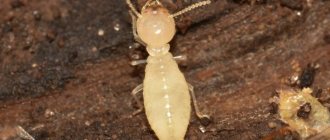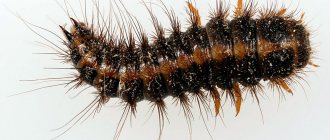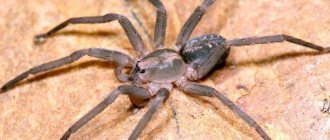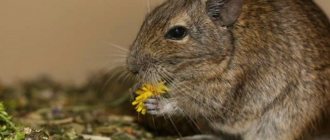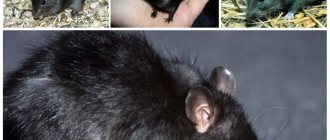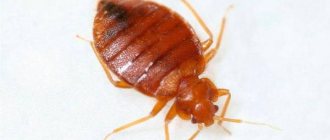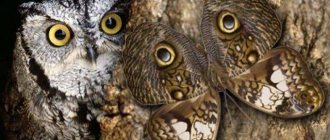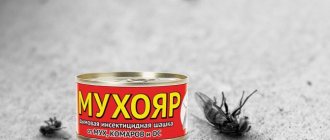07/13/2017 Maria Ivanova 0 comments
The May beetle belongs to the genus May beetles, the subfamily Khrushchi, the family Lamellaridae, and the order Coleoptera. The cockchafer is an arthropod insect. This insect got its name from the month when it actively begins to develop. It is at the end of spring that the cockchafer begins its life cycle.
- 1 What does a cockchafer look like?
- 2 Bronzovka, or green May bug
- 3 Life cycle of the cockchafer
- 4 What do cockchafers eat at home?
- 5 Fighting the cockchafer
- 6 Benefits of the cockchafer
- 7 How to catch chub using a cockchafer?
- 8 Dream Interpretation May Beetle
What does a cockchafer look like?
An adult insect reaches a length of 3.5 centimeters. The body of the cockchafer has an elongated oval shape and is black or brown in color. The beetle has 2 double wings, which are attached to the chest. There are 3 pairs of legs. The body of the cockchafer consists of a head, chest and abdomen, which are covered with protective chitin. The abdomen consists of 8 segments, the chest - of 3 segments.
The elytra protect the hind wings. The head is small. May beetles in down jackets - this is exactly the picture that appears if you look closely at the insect. Its entire body is covered with numerous hairs.
The May Khrushchev has excellent eyesight thanks to its bulging eyes. Each eye consists of thousands of simple ocelli. There is one pair of antennae that perform an olfactory function. The cockchafer has a gnawing type of mouth.
Bronze larva
14.09.2010
The feeding period of Scolia larvae lasts, on average, about 12 days. At the end of it, only the crumpled skin of the game remains, which is thrown aside by the larva to make it more spacious; The dining room is cleaned up a bit, and the scolia immediately begins to weave a cocoon.
The cocoon rests here and there on the walls of the recess, and its first layers consist of coarse blood-red tissue. Placed, as my experiments required, in a depression made with a finger in a layer of plant humus, the larva cannot weave a cocoon for itself due to the lack of a roof to which it could attach its upper threads. In order to make a cocoon, all the spinner larvae must seclude themselves in a hanging hammock, which surrounds them with a transparent fence, allowing them to properly distribute the fabric in all directions. If there is no ceiling, then the cocoon cannot be made from above, since the worker does not have the necessary attachment points there.
Under such conditions, my scolius larvae only manage to cover their dimple with a carpet of red silk. Discouraged by further futile attempts, some die. You might think that they are poisoned by silk, which they cannot regurgitate, since they are powerless to use it. If this were not monitored, then with artificial education this would be partly the reason for failure. But once the danger is understood, the cure is easy to find. I use a short strip of paper to make a ceiling for the cell. If I want to see how things are going there, I bend the strip into an arc, into a half-channel, both ends of which are open. Those wishing to engage in artificial rearing of such larvae can take advantage of these small practical details.
At twenty-four hours the cocoon is over, at least it no longer allows the larva to be seen, which, no doubt, is still thickening the walls of its home inside. At first the cocoon is bright red in color, then it takes on a light chestnut color. It has the shape of an ellipsoid, the major axis of which is 26 millimeters, and the minor axis is 11. The cocoons of females have similar sizes, although they vary somewhat. Cocoons of the other sex are smaller and can go down to 17 mm in length and 7 mm in width. Both ends of the cocoon are so identical in shape that the head end from the back can only be distinguished by a special feature that does not depend on the shape. The head end is flexible and gives in when pressed; the rear end is hard and does not give way. The walls of the cocoon are double, like those of sphex.
The adult insect emerges from the cocoon in early July. Its release occurs without improper breaking and tearing of the cocoon, the head end of which is separated entirely, like a lid.
Enough about the Scolia larva. Let us move on to her victim, whose remarkable structure we are not yet familiar with. With its arched back and almost flat ventral surface, this larva has the shape of a semi-cylinder, sac-like expanded in the rear part. On the back, each ring, except the last, anal, has three large folds, or ridges, dotted with red, hard and short hairs. The anal ring is much larger than all the others, rounded at the end and dark in color due to the contents of the intestines, which are visible through the skin; it, like the other rings, is strewn with hairs, but has no grooves or ridges. On the ventral surface the rings have no folds and the hairs here are somewhat sparser than on the back. The legs, although well-built, are short and weak in comparison with the rest of the body. There is a strong horny cap on the head. The jaws are strong, obliquely cut at the ends, with three or four black teeth.
The method of movement of this larva makes it a strange, exceptional creature, the like of which, as far as I know, is not found in the world of insects. Although endowed with legs, although a little short, but not worse than those of the mass of other larvae, it never uses them for walking and moves on its back, only on its back, never otherwise. Using worm-like movements, resting the hairs of its back on the ground, it moves belly up, with its legs dangling in the air. Anyone who sees this strange gymnastics for the first time will think at first that the larva accidentally toppled over and is struggling, trying to turn over. He puts her back up, but she stubbornly turns over with her belly up and continues to move.
This method of movement, the opposite of the usual one, is so characteristic of it that by this alone the most inexperienced eye can recognize the larva of a bronze fly. Rummage through the rotten wood of hollow old elms, look under rotten stumps or in piles of humus, and if you come across a fat larva crawling on its back, be sure that it is a bronc larva.
Let us compare it with the larva of Anoxia early, which constitutes the prey of spotted scolius. This one is very similar to the larva of the cockchafer (Fig. 112). Thick, potbellied, with a red helmet on her head and armed with strong, black jaws, powerful tools for digging and gnawing roots. Strong legs end in curved claws. In its usual position, it is strongly bent with a hook, and you can never see it fully straightened. Placed on the sand, she is unable to move: bent over like a hook, she lies on her side. To burrow into the ground, it uses the front edge of its head, a kind of pickaxe, the tips of which are the jaws. The legs also participate in this work, but to a lesser extent. She manages to dig herself a shallow well in this way, and then, resting against the walls, she moves with the help of worm-like movements, assisted by short and stiff hairs, and sinks into the sand, but always with difficulty. This is the larva of early anoxia.
Rice. 112. May beetles (Melolontha vulgaris Fbr.); their larvae and pupa are in the ground
With the exception of small, insignificant details, the larva of a rhinoceros beetle is the same, only its size is at least four times larger. The same can be said about the larva of the Pentodon beetle, a fellow resident of the rhinoceros and the bronze beetle.
In a normal state, the larva of the bronze fly, at the slightest disturbance, curls up on its ventral side almost like a hedgehog, and both halves of its ventral surface then touch. The strength exhibited by the insect in order to stay in this position is amazing. When you try to straighten it, your fingers experience resistance that would never be expected from a larva of such size. If you want to defeat this resistance, you have to push with such force that you are afraid of suddenly crushing the larva. Similar muscular energy is found in the larvae of the rhinoceros, anoxia and the cockchafer. Heavy, with a thick belly, living underground where they feed on humus or roots, all these larvae have the strong organization necessary to move their thick bodies in dense environments. They are all curled up with a hook, on the ventral side, and then it is difficult to unbend them. What would happen to the Scolia testicle and its newborn larva, located on the victim’s abdomen in the very corner of the bend? They would be crushed by these living vices. The well-being of Scolia requires that these powerful larvae not only lie stretched out and motionless, but also lose all ability even to a simple shudder, which could prevent them from being systematically eaten.
The larva of the bronze fly, to which the Scolia hairy testicle is attached, surprisingly satisfies all these conditions. She lies on her back, ventral side up. Having long been accustomed to the sight of prey paralyzed by the sting of hymenoptera hunters, I cannot help but be surprised at the sight of the profound immobility of this victim. In other victims with flexible integuments, in caterpillars, crickets, mantises, fillies, ephippiger, I found at least pulsation of the abdomen and weak convulsions when irritated by the point of the needle. Nothing here. Complete immobility everywhere except the head, where I occasionally see the mouth open and close, the tentacles quiver and the short antennae sway. A needle prick does not cause convulsions anywhere, even in the pricked area. The corpse is also motionless. In all my many years of study I have seen many miracles caused by the surgical talent of the Hymenoptera, but this miracle surpasses them all.
My surprise doubles when I pay attention to the unfavorable conditions under which Scolia operates. Other paralyzers work outdoors, in the light. Nothing bothers them. Scolia hunts underground, in complete darkness. Her movements are constrained and hampered by the earth, which is constantly collapsing around her; she cannot follow with her eyes the terrible jaws of the victim, which in one go can bite her in two. Events take place in the darkness of the dungeon. Under such conditions, defeating a strong larva in its hiding place and stinging it with the precision required for immediate paralysis must be no easy operation.
Insect larvae, generally speaking, have one nerve ganglion in each segment. Such, for example, is the winter worm, which the bristly ammophila preys on, and this latter knows its anatomical secret well: it stings the caterpillar many times, in each segment, in each ganglion (p. 100, Fig. 41). Such an operation can only be performed in an open place, in the light, when vision guides the sting, and on a patient who can always be released for a while. But how many insurmountable difficulties such an operation would present for the Scolia, which carries it out underground, and over an enemy significantly superior in strength. The deep paralysis that affects the larva of the bronze must be the result of one injection; this is required by the nervous organization of the larva, which is completely special, as research will show us.
After soaking for a day in gasoline, which dissolves fat and makes the nervous system more visible, I dissect the larva of the bronze fly. Anyone who is not alien to such activities will understand my joy. What a wise surgeon this Scolia is! The nerve ganglia of the trunk and abdomen of the larva are connected into one nerve mass, which is located in a quadrangle bounded by four anterior legs lying very close to the head (Fig. 11H). It is a small matte white cylinder, about 3 millimeters long and 0.5 millimeters wide. Here is an organ that must be pricked with the sting of the scolius in order to cause complete immobility of the entire body, except for the head, which is equipped with a special knot (nd
-rice.).
Rice. 113. Central nervous system of the bronze larva. Highly enlarged:
nd-
suprapharyngeal node;
o—
pharyngeal ring;
pd
- subpharyngeal node;
gr-
thoracic nodes;
br
- abdominal nodes
From this organ come many threads that animate the legs and the powerful subcutaneous muscular layer, the main motor organ of the animal. With a simple magnifying glass one can see that this device has light transverse grooves - evidence of its complex structure. Under a microscope it can be seen that it consists of ten nodes, closely packed, as if welded to each other and separated only by slight constrictions.
Scolia spotted experiences the same difficulties of hunting and operating when it attacks in loose soil on its anoxia. And these difficulties require that the victim also have a concentrated nervous system. This is my belief, derived a priori, and this is the result of direct observation. An anatomical study of the larva of Anoxia early shows me that the nerve centers of the chest and abdomen are also connected here into a short cylinder, which, although located almost now near the head, does not extend from behind beyond the level of the second pair of legs. Thus, the weak point is easily accessible to the sting, despite the animal's defensive posture when it shrinks and curls up. In this cylinder I notice 11 knots, one more than the bronze one.
Having become acquainted with these facts, I am reminded of Swammerdam's work on the rhinoceros larva. I consult the Biblia naturae, this main work of the father of insect anatomy, and find out that the Dutch scientist was struck much earlier than me by a feature of the anatomical structure, similar to what the larvae of bronze insects and anoxia in the structure of their nerve centers had just shown me. Finding that the nervous system of the silkworm consists of a number of separate nodes, he expresses surprise that in the rhinoceros larva the same organ is transformed into one short chain of welded nodes.
Then, having become more familiar with this issue through books, I saw that the anatomical features, which were then so new to me, are now a well-known fact. It is known that in beetles of the lamellar beetles family, the larva, just like the adult (Fig. 114) insect, has a concentrated nervous system.
Rice. 114. Nervous system of the bronze beetle:
A -
suprapharyngeal node;
b—
pharyngeal ring;
c
— subpharyngeal node;
d-
fused thoracic and abdominal nodes
Scolia yellow-fronted preys on the rhinoceros beetle, Scolia hairy - on the bronze beetle, Scolia spotted - on anoxia; all three operate underground, in the most unfavorable conditions, and in all of them the victim is the larva, which, due to the structure of the nervous system, falls into immobility from one prick with a sting, and is therefore convenient for operating even in such unfavorable conditions. As a result of this, I do not hesitate to generalize that the victims of other Scolia must also be the larvae of lamellar beetles, the species of which will be indicated by future observations.
Maybe they will find out that one of the skolia is hunting the terrible enemy of our cultures, the voracious larva of the May beetle; perhaps the red-tailed Scolia, rivaling in size with the yellow-fronted Scolia, will be recognized as one of the most useful insects as the destroyer of the marbled July beetle, this magnificent beetle, with white speckles on a black or chestnut background (Fig. 115), which peacefully chews on summer evenings pine needles, and its larva is just as harmful as the previous larva. I foresee that agriculture will find useful assistants in these beetle-larvae eaters*.
* Scolia four-pointed (Sc. quadripunctata F.) and. the closely related typhia wasp (Tiphia femorata F.) parasitizes in Russia (according to Porchinsky) on the larvae of the bread beetle (Anisoplia austriaca Hbt.) and the garden bronze beetle (Oxythyrea stictica L.). Note ed.
More interesting articles on the topic:
Moving floors
Movement of sexes The sex of a bee's egg depends on the arbitrariness of the mother. This is firmly established
Limitation of instinct
Limitations of instinct My chalicodomes, in their nests hanging from the walls of the platform under the b
Unknown feeling
An unknown feeling What occupies the main place in the history of ammophila and what especially attracted
Cerceris tuberculate
Cerceris tuberculate I have been looking for a long time for an opportunity to be present, in turn, at the work of Cerceris
Odiners
Odinera Closely related to Eumenes are Odinera, the solitary wasps of Reaumur (Fig. 82). Same
Scientist Bandit
The learned bandit Osa-cerceris has just revealed to us part of his secret, indicating the point at which
Bronzovka, or green May beetle
The cockchafer is often confused with the bronze beetle, which, unlike the hero of our article, is green.
The bronze beetle is not a May beetle, although these insects belong to the same family, that is, they are close relatives. The life cycle of a green insect from egg to adult is 2-3 years.
The female bronze bird lays eggs very often in anthills. Bronzewort does not cause any particular harm, because it appears after the flowering of cultivated plants. It feeds on plant flowers and is listed in the Red Book.
Beetle nutrition
What the bronze beetle eats depends on its species. Representatives of the smooth one love overripe fruits, so they do not damage the plantings. On the contrary, beetles act as a kind of orderlies, cleaning up already missing berries and fruits.
The Stinking Bronzewort eats pollen, which is basically harmless. So the beetles even contribute to pollination. However, stinky individuals also have a second favorite product - plant roots. These insects harm the plantings.
The marbled bronze settles in the forest-steppe zone, choosing plantings with an abundance of rotten trunks. Juice flows out of them, which the beetle feeds on. Therefore, the marbled appearance is harmless for agriculture.
The bronzer's diet also depends on its condition. Larvae, for example, eat only dead plants. They switch to living bronze beetles already in the beetle stage.
Life cycle of the cockchafer
The life cycle of the cockchafer is 3-5 years. Life cycle phases:
- egg stage (30-40 days);
- pupal stage (30-60 days);
- larval stage (3 years);
- stage of an adult insect, or imago (1 year).
The female begins to lay 20-30 eggs in the ground at the end of May. She carries out this procedure 3-4 times in the same place. After laying eggs, the female dies.
The eggs are found in the ground at a depth of 30 cm, they are white in color and have a diameter of 2.5 mm.
After 30-40 days the larvae hatch. They have a thick white body, 3 pairs of legs, and a head with well-developed jaws. The cockchafer larva develops for 3 years and overwinters underground. All this time she feeds on plant roots. In early August, the larva burrows deeper into the ground and turns into a pupa. An adult cockchafer insect develops from the pupa.
Golden bronze: description of the pest
The bronze beetle, or bronze beetle, belongs to the order of Coleoptera of the family Lamelidae, genus cetonia, which means “metal beetle.” Biologists distinguish at least five subspecies of this beetle, each of which has several deviations in appearance from the main subspecies. Therefore, the length of the elongated oval body of a beetle can be from 1.3 cm to 2.3 cm. All insects of this genus have front digging legs and antennae, which are hidden on the head under a chitinous shield. A characteristic feature of golden bronze is the emerald color of the chitinous coating of the “green metallic” type.
Did you know? The beetle's color is actually black. However, the structure of its chitinous coating is complex, refracting light. Therefore, due to the play of rays decomposed into a spectrum, the surface casts an emerald green, copper-reddish, and sometimes even blue tint. This pigmentation is called optical or structural.
Due to its size and anatomical features, the insect is often called the green cockchafer. They belong to the same family, but different genera. Therefore, calling these two insects by the same name is a mistake. Moreover, they have completely different behavior patterns.
Thus, bronzebacks are active only in sunny, warm weather, although even at this time they can be clumsy. In bright, warm sunshine, they move from bush to bush or from flower to flower. But sometimes they don’t have time to get their bearings and crash into a walking person or animal. They fall on their backs and take an incredibly long time to roll back over.
Did you know? For those who claim that the green beetle is similar to the May beetle, it is useful to know the differences in the beetle's flying apparatus. So, if the May raises the elytra for flight, then in the bronze bird they remain on the back, only slightly rising. It extends its wings on the sides through a special cutout in the elytra. No other beetle can boast such a flight design.
The beetle's active period begins in late spring and lasts no more than 4.5 months, depending on the region. If the day turns out to be bad, the golden bronze insect sits motionless all day on a flower, fixing itself on it with its front legs and head. At night and during periods of cold weather, it slides or falls down and buries itself in the ground near the stem and root of the plant. The beetle lives throughout Eurasia, except for deserts and mountainous regions.
What do cockchafers eat at home?
Adult cockchafers mainly feed on leaves, flowers and shoots of trees and shrubs (currants, gooseberries). Among the trees they prefer are apple, plum, cherry, oak, birch, rowan, maple, etc.
But the larvae cause damage to plants, especially in the second year of life. The larvae are very voracious and feed on the roots of fruit crops: carrots, strawberries, potatoes, beets, corn, etc.
But beetles practically do not live at home, since it is extremely difficult to replicate the natural atmosphere. However, this does not bother many children and keeps it in a jar or matchbox.
What are the harms and benefits of Khrushchev?
Maliciousness
Why is the cockchafer dangerous?
The larvae spoil the roots of various plants, especially damaging young seedlings. Adults actively eat leaves. It is known that large populations can completely destroy a woodland or garden .
Fortunately, effective methods have now been developed to combat the cockchafer.
Benefit
Some sources claim that the cockchafer has healing qualities . It helps cure impotence, pulmonary tuberculosis, uterine cancer, scrofula and radiculitis.
Fighting the cockchafer
With the onset of warm weather, May beetles actively begin to eat leaves and shoots of trees. More terrible than the larvae of the cockchafer - they eat the entire root system of the plant in the ground, and it dies.
Preparations to combat the cockchafer and its larvae:
Zemlin;- Nemabact;
- Aktara;
- Antikhrushch.
Traditional methods of struggle:
- shaking off trees;
- use of birds (chickens, starlings);
- You can hang a white canvas and illuminate it with bright light. May beetles will crawl onto the canvas;
- plant white clover or lupine where you want to kill the larvae.
Fighting cockchafer larvae on strawberries: strawberries are treated with a solution of onion peels (100 g per 10 liters of water).
Mole cricket and its larvae
The terrifying appearance of the burrowing mole cricket beetle is familiar to many gardeners - a large brown, big-eyed insect with claws for digging the ground. And the harm these insidious creatures bring to the site is undeniable - they feed on earthworms and root crops, actively gnawing the roots of cultivated plants during their underground movements, and multiply quickly.
Most often, an inexperienced summer resident can bring a mole cricket to the site along with manure or compost, which these insects also do not disdain as a food product.
But what does a mole cricket larva look like and is it dangerous for the garden? Female mole crickets make nests underground where they lay hundreds of eggs. Hatching larvae have a body shape very similar to an adult insect, only much smaller and lighter, and at first they do not have eyes. They develop over several years, are less mobile than adults, and have weaker jaws, but they eat the same things: small roots, bulbs, worms, plant seeds, and small insect larvae.
Despite the fact that the mole cricket is mainly an underground dweller, it flies and swims beautifully, so it is not easy to catch and destroy it. What to do? Use several methods of pest control at once - both folk and “official”.
Plant marigolds, calendula, chrysanthemums, parsley, onions, and garlic in the garden - their pungent smell is unpleasant to insects. Pour infusion of onion peels or soapy water into the discovered holes made by mole crickets in the ground, or add calcium carbide (after rain it will react chemically with water, releasing acetylene gas, which is poisonous to insects). Use proven chemicals (Medvetox, Antimedvedka, Medvetsid, Rembek, Boverin, Fenaxin Plus, etc.).
How to deal with mole crickets - effective drugs and folk remedies Don’t know how to get rid of mole crickets on your property? Our recipes will help you protect your garden crops from this underground pest.
How to catch chub using a cockchafer?
But for fishermen, May beetles are a real value, because they can be used to catch some species of fish. Catching chub with a cockchafer occurs as follows. We cast the fishing rod, lower the line and wait for the bite. The bait should not move...
You will quickly feel the bite and hook. But don’t rush to pull out the chub, let him walk with the bait. Chub is a good catch using a cockchafer wobbler. The cockchafer wobbler is an artificial but effective bait.


